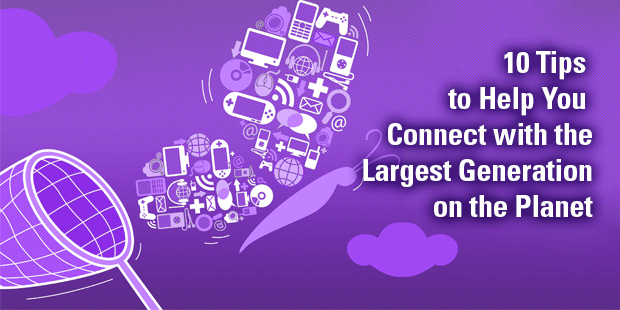
10 Tips to Help You Connect with the Largest Generation on the Planet
I’d like to introduce you to Generation Z.
I know, some of you are still trying to catch up with Busters, or Generation X, or whatever we called whoever followed the Boomers. Or maybe you leapfrogged over all that straight to Generation Y (Millennials), on whom marketers have been focused for at least a decade.
Let me save you some time. Drop everything and start paying attention to Generation Z, who now constitute 25.9% of the U.S. population. That’s more than Millennials (24.5%). That’s more than Gen X (15.4%). Yes, that’s even more than Baby Boomers (23.6%).
So who falls into Generation Z? There’s still some debate on exact dates, but essentially those who were born after Generation Y. So approximately 1995 to present. At the time of this writing, it is the generation that is now under the age of 18.
Do the math, and you realize that they grew up in a post 9/11 world during a recession. They’ve experienced radical changes in technology and understanding of family, sexuality and gender. They live in multi-generational households, and the fastest growing demographic within their age-group is multi-racial.
And how has that molded them? According to the marketing research of Sparks and Honey, here are some “Z” headlines:
- they are eager to start working
- they are mature and in control
- they intend to change the world
- they’ve learned that traditional choices don’t guarantee success
- entrepreneurship is in their DNA
- they seek education and knowledge, and they use social media as a research tool
- they multi-task across five screens, and their attention spans are getting shorter
- they think spatially and in 4-D, but lack situational awareness
- they communicate with symbols, speed and with images
- their social circles are global
- they are hyper-aware and concerned about man’s impact on the planet
- they are less active, and frequently obese
- they live-stream and co-create
I’ll stop there, because the list goes on and on. Bottom line: they are not Millennials. So how do you connect with the largest generation on the planet? Marketers are way ahead of you.
Here’s a top ten to consider:
1. Talk in images: emojis, symbols, pictures, videos.
2. Communicate more frequently in shorter bursts of “snackable content.”
3. Don’t talk down…talk to them as adults, even about global topics.
4. Make stuff – or help Gen Z make stuff (they’re industrious).
5. Tap into their entrepreneurial spirit.
6. Collaborate with them – and help them collaborate with others.
7. Tell your story across multiple screens.
8. Live-stream with them – or give them live-streaming access.
9. Optimize your search results (they do their internet research).
10. Include a social cause that they can fight for.
Do you see a theme? I do. It’s all about talking in a way they will understand. Not watering down the communication of the message, just changing the method of communication.
And with Generation Z?
It needs changing.
>> Read more from James Emery White here.

Tags: Generation, Generation Z, Generational differences, James Emery White












